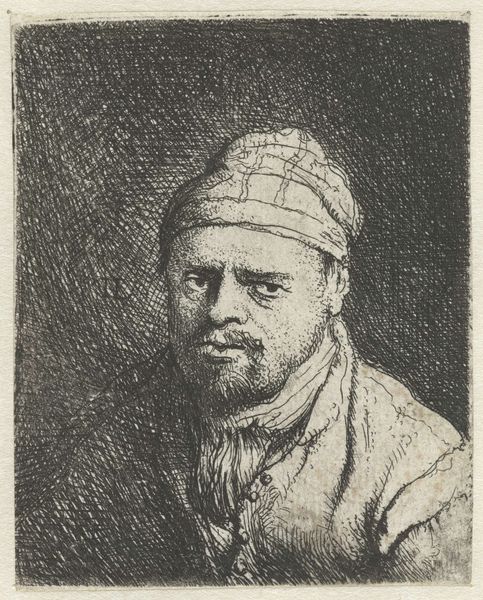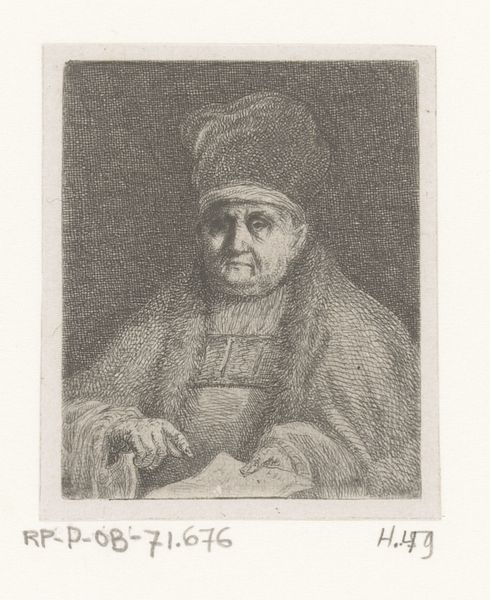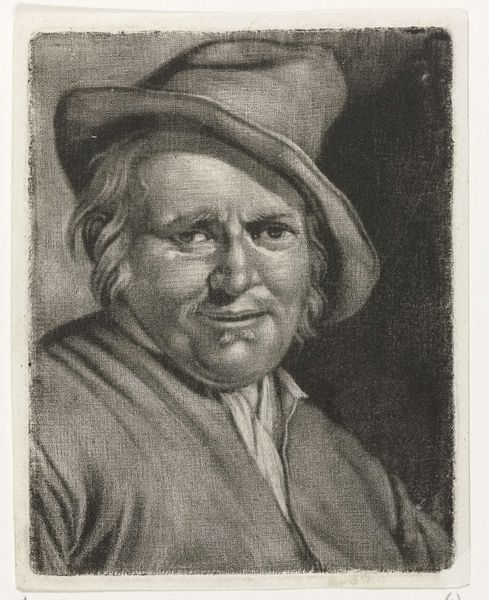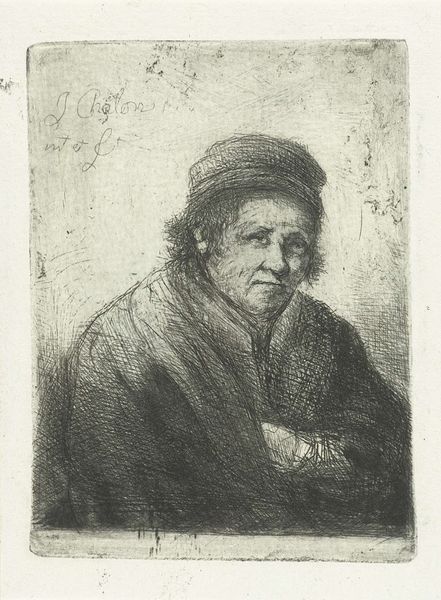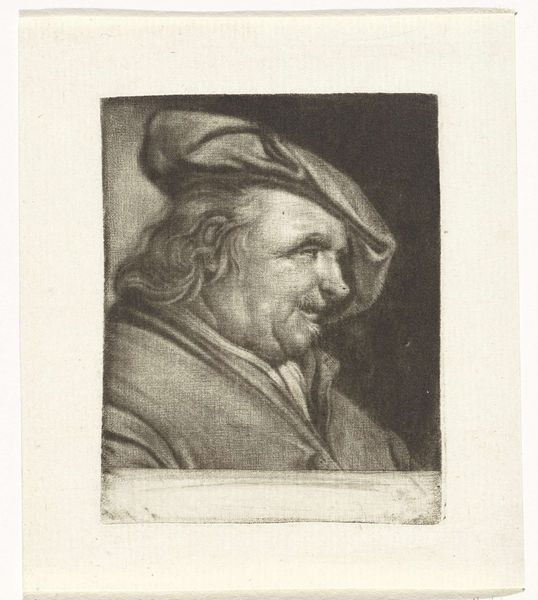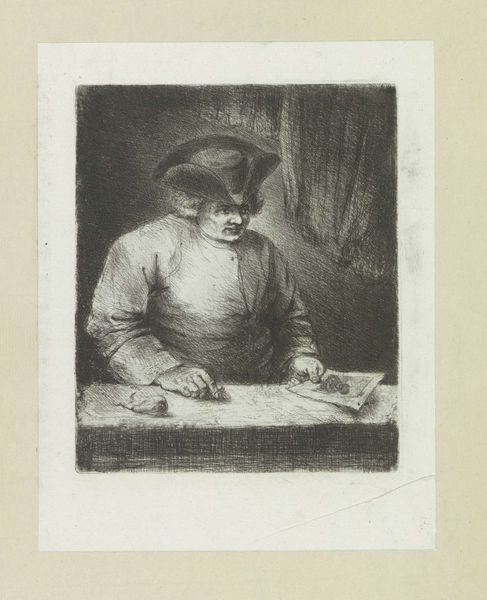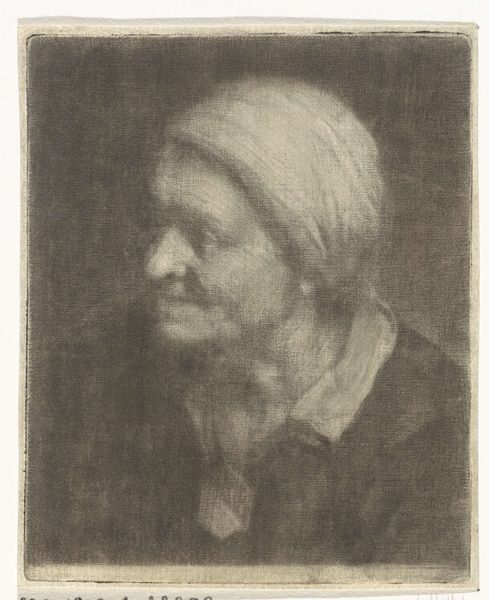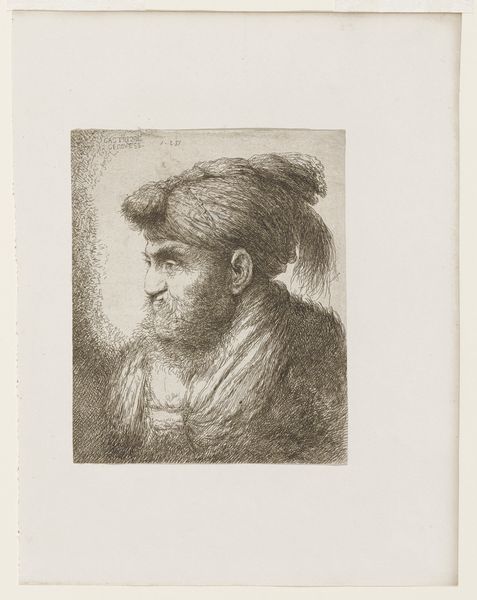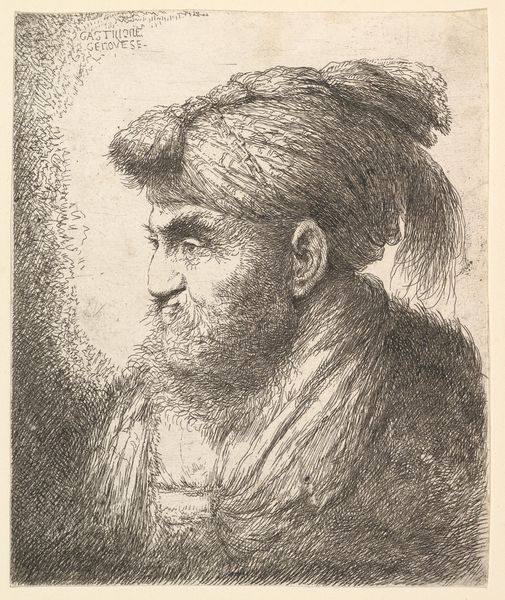
drawing, print, etching, engraving
#
portrait
#
pencil drawn
#
drawing
#
baroque
# print
#
etching
#
portrait drawing
#
engraving
Dimensions: height 96 mm, width 58 mm
Copyright: Rijks Museum: Open Domain
Curator: There’s something deeply contemplative about this piece, wouldn’t you agree? Editor: Absolutely. I immediately get a sense of the sitter's weariness—or perhaps resignation? Curator: This is "Buste van man met muts," or "Bust of a Man with a Cap," an engraving by Aert Schouman, likely created sometime in the 18th century, and part of the Rijksmuseum's collection. The texture is striking. Editor: The etching technique is crucial here. You see the marks left by the process, highlighting the labor of printmaking and the mass production that comes with such work. How do the printmaking materials shape accessibility to art? Curator: A great point. Considering it's from the 1700s, one wonders about the identity of the subject—was he from a particular social class? And how does Schouman, as the artist, reflect or challenge social norms? Editor: Exactly! Look at the simple cap, a signifier perhaps of a specific trade or social stratum. Who could own and circulate this image? Was it about class visibility and representation in the era, before broader democratization? Curator: Given that prints allowed for a certain level of reproducibility and circulation, it is worth thinking about how the engraving might function in relationship to patronage. The way that wealth is visualized can then allow us to place it into art historical patterns of production and consumption. Editor: Moreover, the engraving—by its nature, made to be replicated— speaks to accessibility. Consider its social and economic function as a medium of cultural transmission available beyond the elite circles usually represented. What alternative perspectives of representation does it provide us? Curator: Perhaps he saw these prints, his process of creating them, as an accessible commodity for people. It offered access to a level of artistry and status that may not have been readily available. It provided a vision of the world. Editor: A democratization of art that perhaps opened a broader conversation about whose faces got seen and circulated, whose lives were given consideration. A potent challenge through a readily available medium! Curator: Thinking through that framework opens interesting perspectives on the social landscape of the time. It highlights art not just as an aesthetic product, but as a marker of the human labor involved. Editor: I’m struck by the nuances of how such accessible forms also become grounds for representing broader social realities. Thanks for this fresh approach!
Comments
No comments
Be the first to comment and join the conversation on the ultimate creative platform.

